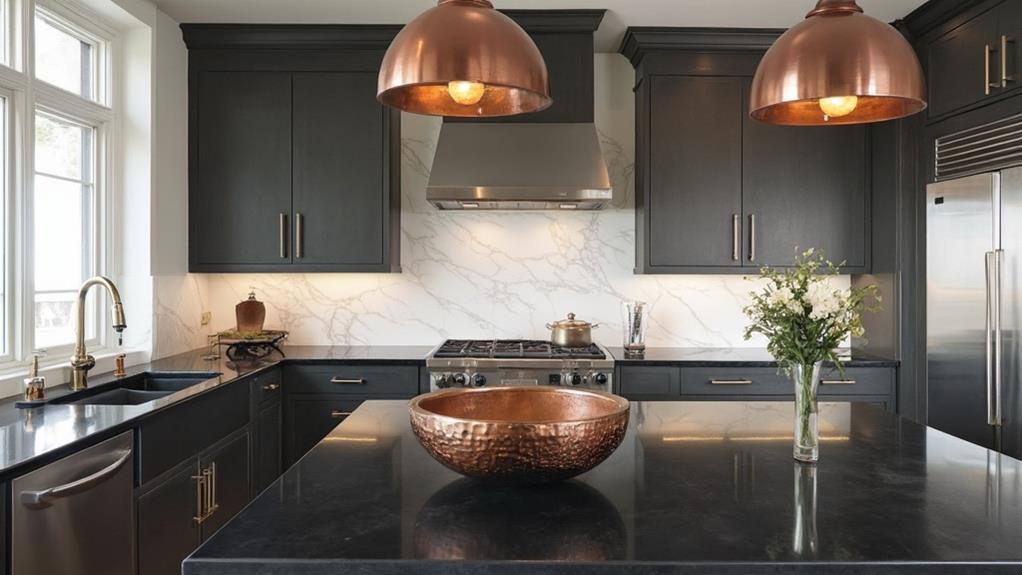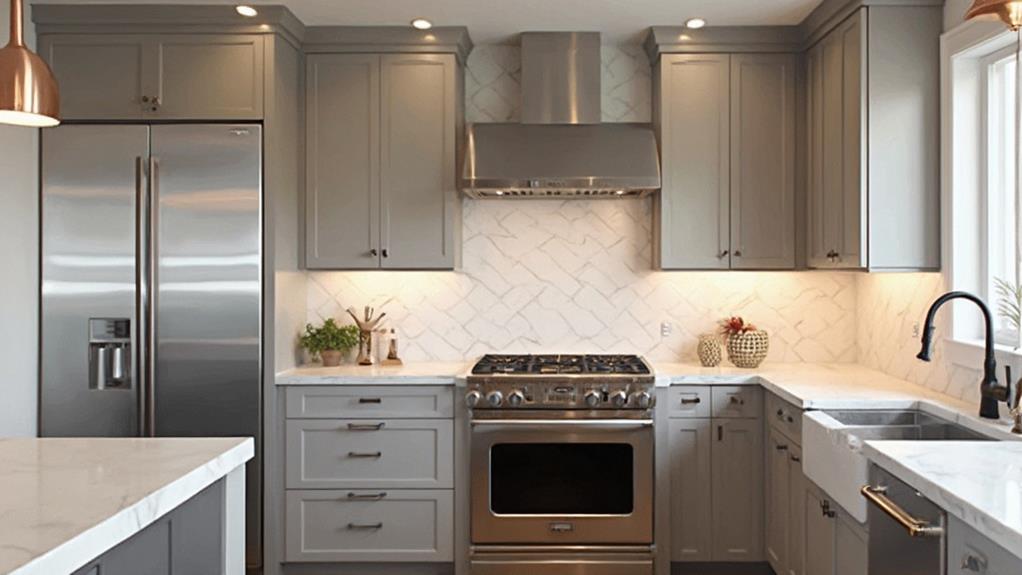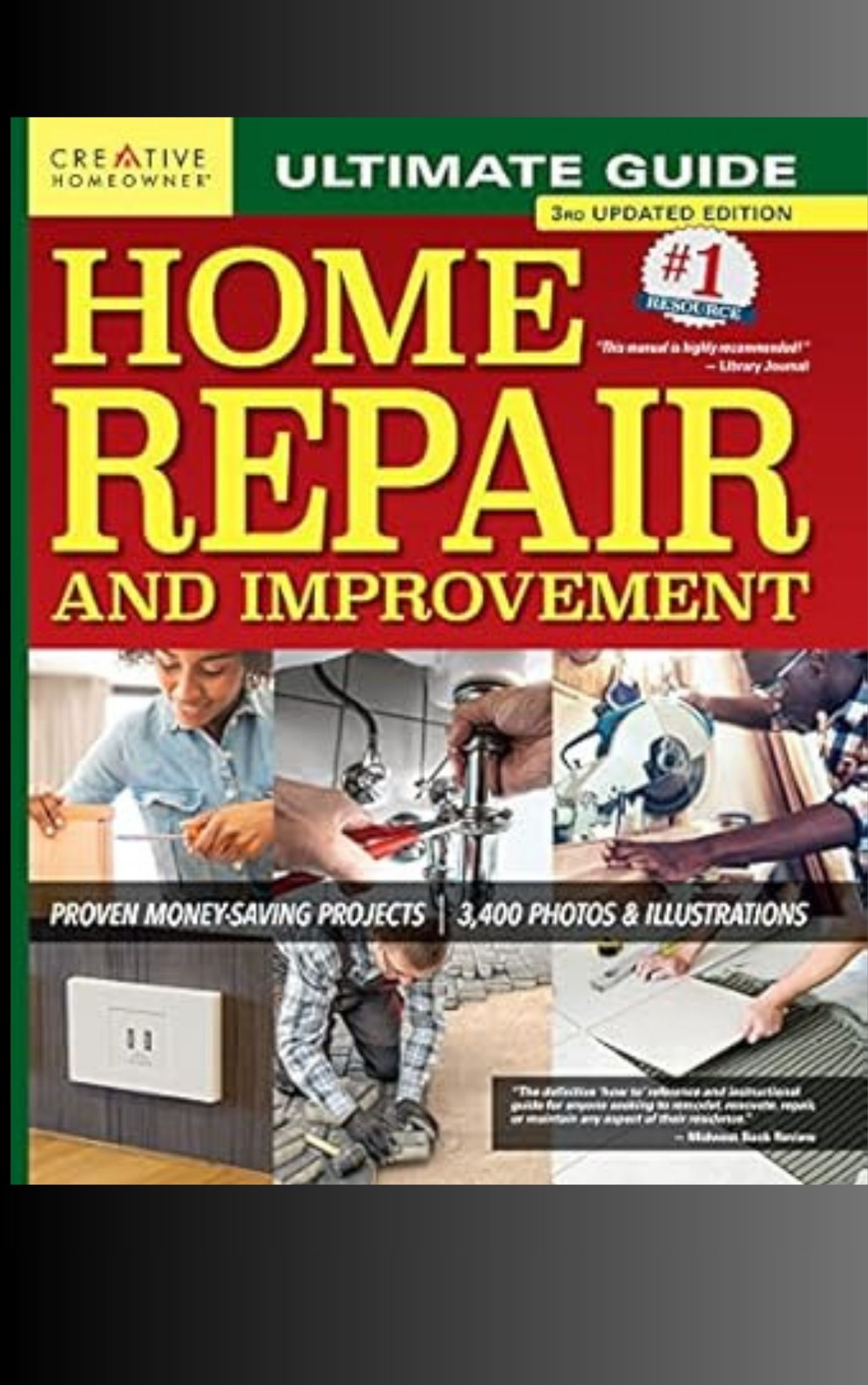When mixing metals in kitchen design, you'll want to start by choosing a dominant metal family—warm, cool, or neutral—to cover about 60-70% of visible surfaces. Balance this with complementary accents from other metal families, considering your kitchen's overall style and color palette. Create cohesion by repeating metals throughout the space, using fixtures and hardware as unifying elements. Don't forget to play with textures and finishes, like brushed, polished, or hammered, to add depth and interest. By mastering the art of mixing metals, you'll create a dynamic, visually stunning kitchen that reflects your unique taste. Explore further to unlock the full potential of this design technique.
Understanding Metal Families

Metal families form the foundation of kitchen design choices when it comes to fixtures and finishes. To successfully mix metals in your kitchen, you'll need to understand these families and how they interact. The main metal families are warm metals, cool metals, and neutral metals.
Warm metals include gold, brass, and copper. They're known for their rich, inviting tones that add warmth to a space.
Cool metals, such as chrome, nickel, and stainless steel, offer a sleek, modern look.
Neutral metals like pewter and iron can bridge the gap between warm and cool tones.
When mixing metals, it's essential to choose a dominant metal family and use others as accents. For example, you might select brass as your primary metal, using it for cabinet hardware and faucets, while incorporating stainless steel appliances as a complementary element. The key is to maintain balance and create a cohesive look.
Remember that metal finishes also play a role. Brushed, polished, and hammered finishes can add texture and interest to your kitchen design. By understanding metal families and their characteristics, you'll be better equipped to create a harmonious and stylish kitchen space.
Choosing a Dominant Metal
Now that you're familiar with metal families, it's time to select your dominant metal. This choice will set the tone for your kitchen and guide your other metal selections. Your dominant metal should cover about 60-70% of the visible metal surfaces in your kitchen.
Consider your kitchen's overall style when choosing. For traditional kitchens, warmer metals like brass or copper often work well. Modern kitchens typically favor cooler tones like stainless steel or chrome. Don't forget to factor in your cabinets, countertops, and wall colors when making this decision.
Look at larger fixtures and appliances to help determine your dominant metal. Your refrigerator, range, and dishwasher often dictate this choice. If you're starting from scratch, you have more flexibility. Think about durability and maintenance as well. Stainless steel is easy to clean and resists corrosion, while copper develops a unique patina over time but requires more upkeep.
Once you've chosen your dominant metal, you'll use it for major elements like cabinet hardware, faucets, and light fixtures. This foundation will guide your accent metal choices and create a cohesive look in your kitchen design.
Balancing Warm and Cool Tones

Harmony in your kitchen design often comes from skillfully balancing warm and cool metal tones. Warm metals like brass, copper, and gold add a cozy, inviting feel, while cool metals such as stainless steel, chrome, and nickel create a sleek, modern atmosphere. To achieve balance, consider pairing warm and cool metals in complementary proportions.
Start by selecting your dominant metal, then introduce accents of the opposite tone. For example, if you've chosen stainless steel appliances, incorporate warm brass cabinet hardware or copper light fixtures. Alternatively, with brass as your primary metal, add cool chrome faucets or stainless steel sinks.
Don't shy away from mixing multiple warm or cool tones. Copper and brass can work beautifully together, as can chrome and nickel. The key is to maintain a cohesive look by repeating each metal at least twice throughout the space.
Consider the overall color palette of your kitchen when selecting metals. Warm metals pair well with earth tones and wood finishes, while cool metals complement white, gray, and blue hues. By thoughtfully combining warm and cool metal tones, you'll create a dynamic, visually interesting kitchen design.
Unifying Elements in Mixed Metals
When incorporating multiple metals into your kitchen design, it's crucial to establish unifying elements that tie everything together. Start by selecting a dominant metal that'll serve as your primary finish, then choose complementary metals as accents. Use repetition to create cohesion; for example, if you've chosen brass hardware, incorporate brass accents in lighting fixtures or decorative objects.
Consider using mixed metal fixtures, such as faucets or light fixtures that combine two metals, to bridge the gap between different finishes. Introduce textiles, like curtains or upholstery, that feature metallic threads or patterns to echo your chosen metals throughout the space. Paint colors can also help unify your metal choices; select hues that complement all the metals you're using.
Don't forget about your countertops and backsplash. Choose materials that work well with your metal palette, such as a marble with gold veining to tie in brass accents. Lastly, maintain a consistent style throughout your kitchen. Whether you're going for a modern, traditional, or eclectic look, ensure that all your metal elements align with this overarching aesthetic.
Incorporating Texture and Finish

Beyond selecting the right metals for your kitchen, texture and finish play a significant role in creating visual interest and depth. When incorporating mixed metals, consider varying the textures and finishes to enhance the overall design. You'll find that brushed, polished, hammered, and matte finishes each offer unique visual and tactile qualities.
For a cohesive look, try pairing a brushed nickel faucet with matte black cabinet hardware. The contrast in both color and texture will create a striking visual impact. Alternatively, combine polished chrome appliances with hammered copper accents for a dynamic interplay of smooth and textured surfaces.
Don't forget about the power of patina. Aged brass or copper can add warmth and character to your kitchen, complementing both modern and traditional designs. When mixing textures, aim for balance. Too many competing textures can overwhelm the space, so choose one or two dominant textures and use others as accents.
Conclusion
As you step into your newly designed kitchen, you'll see a symphony of metals dancing before your eyes. The gleaming copper hood catches the light, while brushed nickel handles add a cool touch. You've mastered the art of metal mixing, creating a space that's both harmonious and dynamic. With each carefully chosen element, you've crafted a kitchen that's uniquely yours – a perfect blend of warmth, style, and functionality that'll inspire your culinary adventures for years to come.

